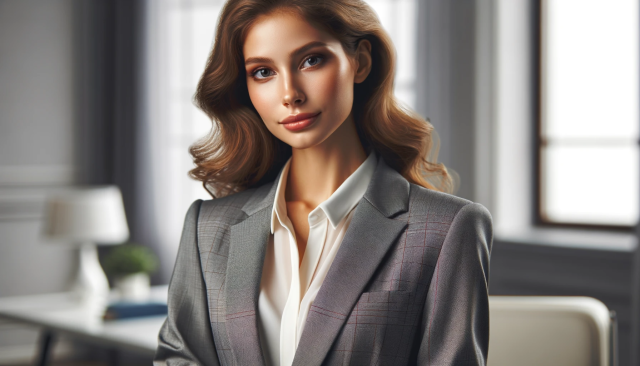Introduction
In the professional world, how you dress plays a crucial role in how you are perceived. Dressing well can not only make a strong first impression but also impact your confidence and, by extension, your professional success. This blog aims to guide you through the essentials of professional dressing, helping you navigate various dress codes with ease and confidence.
Understanding Professional Dress Codes
Grasping the nuances of professional dress codes is key to dressing appropriately for your work environment.
- Business Formal: This dress code is the most professional and conservative, typically required in traditional business environments. For men, this means tailored suits, while women can opt for business suits or conservative dresses.
- Business Casual: More relaxed than business formal, business casual is a balance of professionalism and comfort. It typically includes slacks or khakis, dress shirts or blouses, and an optional blazer or sweater.
- Smart Casual: This dress code is a notch above casual wear and allows for more personality while still maintaining a professional look. Think of combining casual pieces with more formal items, like wearing a blazer with denim jeans.
Essentials of Business Formal Attire
Dressing in business formal attire is about presenting a professional, polished image. Here’s how to master this dress code:
- For Men: A well-tailored suit is indispensable. Opt for classic colors like navy, black, or gray. Pair it with a crisp, white dress shirt and a conservative tie. Ensure that your shoes are polished and match your belt.
- For Women: Options include a tailored suit with pants or a skirt, or a professional dress paired with a blazer. Stick to neutral colors and subtle patterns. Closed-toe shoes, either flats or heels, complete the look.

Navigating Business Casual
Business casual can vary widely, but it generally offers more flexibility than business formal while still maintaining a professional appearance.
- For Men: Combine dress pants or khakis with a button-down shirt. Ties are optional. Layering with a sweater or a blazer can add sophistication. Loafers or dress shoes are appropriate.
- For Women: Mix and match tailored pants or skirts with blouses or tops. Cardigans and blazers are great for layering. Keep jewelry and accessories understated.
Accessorizing Your Professional Look
Accessories can significantly enhance your professional attire, adding a touch of personality while maintaining a polished look.
- For Men: Accessories should be subtle yet refined. A quality watch, a leather belt that matches your shoes, and a conservative tie can elevate your outfit. Briefcases or professional bags add functionality and style.
- For Women: Jewelry should be understated – think simple earrings, a delicate necklace, or a classic watch. Scarves can add color and sophistication. Choose a professional bag or tote that is both stylish and practical.
Grooming and Personal Presentation
Grooming is an essential aspect of your professional image. It’s about looking neat, clean, and well put together.
- General Grooming Tips: Regardless of gender, it’s important to have neat hair, clean nails, and minimal, if any, fragrance. Make sure your clothes are well-fitted, ironed, and in good condition.
- For Men: Keep facial hair well-groomed and hair styled neatly. Avoid overly trendy hairstyles in conservative environments.
- For Women: Hairstyles should be neat and professional. Makeup, if worn, should be subtle and enhance your natural features.

Adapting to Different Professional Settings
Different professional scenarios may call for variations in your attire. It’s important to adjust accordingly while maintaining a professional image.
- Interviews: Opt for business formal to make a strong first impression.
- Daily Work: Depending on your workplace’s culture, choose between business formal and business casual.
- Meetings and Presentations: Dress more formally to convey professionalism and respect for the occasion.
Conclusion
Dressing for success is an integral part of your professional life. It not only affects how others perceive you but also influences your self-confidence and performance. Invest in a wardrobe that reflects your professional aspirations and personal style. Remember, the key is to be adaptable, comfortable, and authentic in your professional attire.












































